- Region
- Águilas
- Alhama de Murcia
- Jumilla
- Lorca
- Los Alcázares
- Mazarrón
- San Javier
-
ALL AREAS & TOWNS
- AREAS
- SOUTH WEST
- MAR MENOR
- MURCIA CITY & CENTRAL
- NORTH & NORTH WEST
- TOWNS
- Abanilla
- Abarán
- Aguilas
- Alamillo
- Alcantarilla
- Aledo
- Alhama de Murcia
- Archena
- Balsicas
- Blanca
- Bolnuevo
- Bullas
- Cañadas del Romero
- Cabo de Palos
- Calasparra
- Camping Bolnuevo
- Campo De Ricote
- Camposol
- Canada De La Lena
- Caravaca de la Cruz
- Cartagena
- Cehegin
- Ceuti
- Cieza
- Condado de Alhama
- Corvera
- Costa Cálida
- Cuevas De Almanzora
- Cuevas de Reyllo
- El Carmoli
- El Mojon
- El Molino (Puerto Lumbreras)
- El Pareton / Cantareros
- El Raso
- El Valle Golf Resort
- Fortuna
- Fuente Alamo
- Hacienda del Alamo Golf Resort
- Hacienda Riquelme Golf Resort
- Isla Plana
- Islas Menores & Mar de Cristal
- Jumilla
- La Azohia
- La Charca
- La Manga Club
- La Manga del Mar Menor
- La Pinilla
- La Puebla
- La Torre
- La Torre Golf Resort
- La Unión
- Las Palas
- Las Ramblas
- Las Ramblas Golf
- Las Torres de Cotillas
- Leiva
- Librilla
- Lo Pagan
- Lo Santiago
- Lorca
- Lorquí
- Los Alcázares
- Los Balcones
- Los Belones
- Los Canovas
- Los Nietos
- Los Perez (Tallante)
- Los Urrutias
- Los Ventorrillos
- Mar De Cristal
- Mar Menor
- Mar Menor Golf Resort
- Mazarrón
- Mazarrón Country Club
- Molina de Segura
- Moratalla
- Mula
- Murcia City
- Murcia Property
- Pareton
- Peraleja Golf Resort
- Perin
- Pilar de la Horadada
- Pinar de Campoverde
- Pinoso
- Playa Honda
- Playa Honda / Playa Paraíso
- Pliego
- Portmán
- Pozo Estrecho
- Puerto de Mazarrón
- Puerto Lumbreras
- Puntas De Calnegre
- Region of Murcia
- Ricote
- Roda Golf Resort
- Roldan
- Roldan and Lo Ferro
- San Javier
- San Pedro del Pinatar
- Santiago de la Ribera
- Sierra Espuña
- Sucina
- Tallante
- Terrazas de la Torre Golf Resort
- Torre Pacheco
- Totana
- What's On Weekly Bulletin
- Yecla


- EDITIONS:
 Spanish News Today
Spanish News Today
 Alicante Today
Alicante Today
 Andalucia Today
Andalucia Today
Bajo de la Campana, the important Phoenician boat excavation at La Manga
Excavations at the Bajo de la Campana, Phoenician boat site in La Manga del Mar Menor.
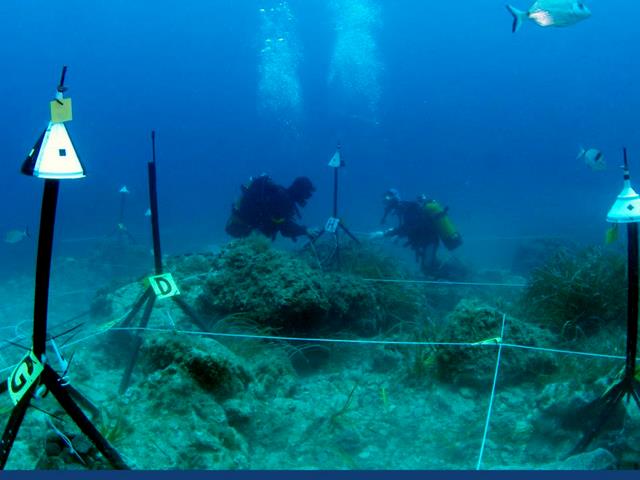
It holds the remains of not just one vessel, but four, amongst them a Phoenician vessel which is believed to exceed 20 metres in length, the largest ever found on the Murcian coastline and of extreme importance to those studying the history of this nation of marine traders.
The archaeological excavation of a Phoenician vessel at Bajo de la Campana, San Javier, Murcia
CONTENTS
Overview
A little history. Who are the Phoenicians?
The location of the Bajo de la Campana site.
Methodology of the excavation
The Artefacts
The Team
Overview
The Bajo de la Campana marine archaeological site is located within the Murcian municipality of San Javier, close 
It is an important archaeological site which is currently in its third season of excavation, and is the location of the third Phoenician wreck to have been discovered in the Region of Murcia; there are two further sites in the Playa de la Isla, in the Mazarrón municipality, which yielded 2 vessels, known as hippos, small light weight vessels measuring around 8 metres in length which transported smaller quantities of goods along the coastline.
This wreck, dating from the 7th century before Christ is believed to exceed 20 meters in length, and appeared to be carrying a large quantity of raw materials, together with some interesting trade goods, an important archaeological site yielding valuable archaeological evidence about the trading activities of this once immensely powerful nation of trading merchants.
A little History. Who are the Phoenicians?
The Phoenicians were an ancient civilization centred in what is now Lebanon, Palestine, Syria and Israel, whose 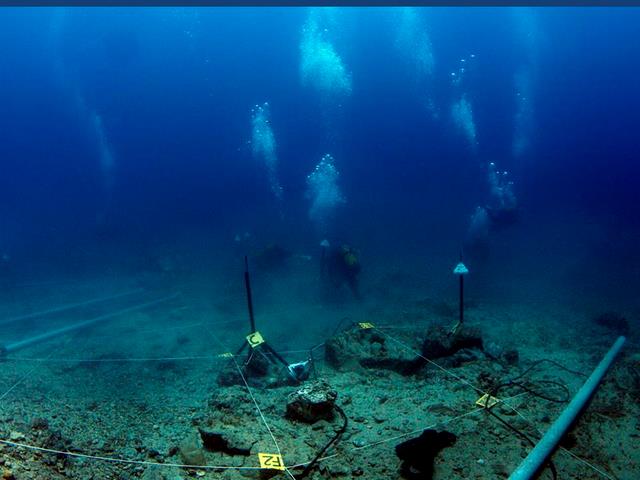
They were great traders, particularly marine traders, active along the Mediterranean and Erythraean (Red) Sea routes, and were known to have used an alphabet in the 12th century which was adopted by the Greeks, with whom they were active trade partners, to become the foundation for the modern alphabet we use today.
Their sophisticated culture revolved around the three power bases of King, Temple and Council of elders, and their society operated very much in the form of city states; their main bases were in what was then Phoenicia, being the cities of Byblos, Tyre, Sidon, Simyra, Arwad and Berytus, and from there they extended their trading activities across Europe and North Africa.
They traded a wide variety of goods and are known to have traded slaves, wood, glass, raw materials and luxury goods, one of the most famous being the colourful textiles produced using murex sea shells, the treasured Tyrian Purple dyed fabrics.
A complex process enabled the Phoenicians to produce this luxurious purple dye, the purple of kings, from these sea snails which were once common, but were so over-exploited in pursuit of this dye that they were virtually wiped out, and the Phoenicians themselves had substantial production centres in Sarepta in modern day Lebanon, and Mogador in what is now Morocco.
They were astute in their trading activities: vines wouldn’t grow in Egypt, so they produced ceramic 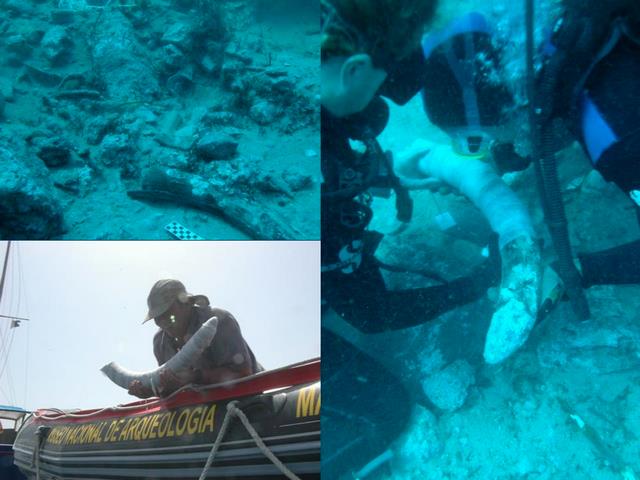
They were also accomplished metalworkers, and moved vast quantities of raw materials for smelting, trading silver and lead from Iberia (now Spain), copper from Cyprus and even tin from the Cornish mines of the UK, smelting the copper and tin to make bronze, the metal which revolutionized the world of weaponry.
They were active around the Mediterranean, and indeed along our own coastline from 1550BC to around 350BC, the height of their trading activities here in Murcia being in the 7th-8th centuries BC.
As a nation, Phoenicia grew to its greatest around 1200 BC, when the balance of power in ancient society changed, believed by some to be attributed to a natural event, possibly a volcanic, or more than one volcanic eruption, which provoked a great movement of populations, populations known as the "sea people" appearing in historical records in the Mediterranean basin and African coast.
Their arrival, and subsequent attempts to settle in other lands, mainly Egyptian territory, provoked wars with Egypt, which, allied with a succession of crop failures, possibly caused by climatic change, weakened Egyptian power, a vacuum which was filled by the Phoenicians who grew to their most powerful around this time.
However, by the sixth century BC their power was on the wane, and Phoenicia was invaded by the Persians, so many fled to the trading colonies they had established throughout the Mediterranean and African coastline, the most famous of these being Carthage on the African coastline.
From here, they controlled their vast trading networks, focusing on the trade of minerals, with Spain, and the area of 
However, the power of Rome was in the ascent, and a series of bitter and violently fought wars, the Punic wars, drove them ever further south, and in 146BC, Carthage was destroyed by the Romans and the Phoenicians as a nation, ceased to exist.
Of great relevance to ourselves in this region is the development as Carthage with its own identity, and the subsequent emergence of the "Carthaginians" from the Phoenician exodus. Cartagena as we now know it was effectively taken over by the Carthaginians and the relationship changed from a trading relationship to one of Carthaginian "protection".
However, there is a vast amount of debate about the genetics of where the Phoenicians as a nation went to and when they ceased being Phoenicians.
An interesting point to note, is that genetic research has shown that one in 17 men living along the South European and North African coasts today, could be genetically descended from the Phoenicians, a testament to the extent of their influence and the establishment of their colonies and trading posts across the Mediterranean and Africa.
So, what does this have to do with Spain and more specifically, Murcia?
This region is known to have been part of the trading network used by the Phoenicians, and there is substantial 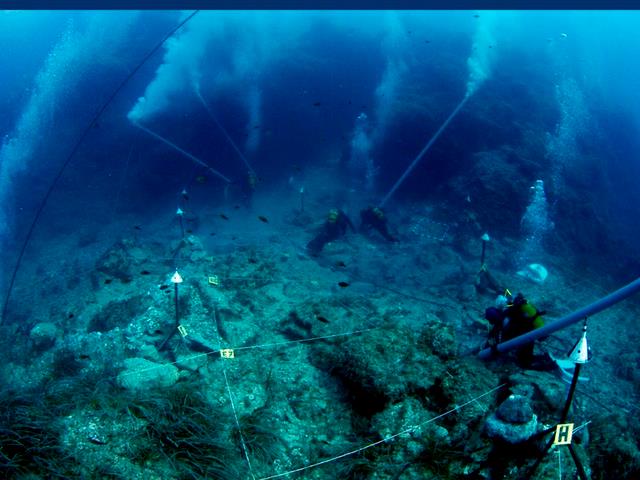
They certainly traded minerals mined from here, and dealt in fish sauces which were produced along this coastline, and the presence of the three Phoenician wrecks discovered in Mazarron and La Manga testify to their presence and activities.
The Mazarron wrecks, Mazarron 1 and 2 are both of smaller vessels which would probably have been used to ferry cargo either out to larger ships anchored offshore, or further along the coast to consolidation points for onward shipping, whilst the La Manga wreck is believed to have been a much larger vessel, transporting raw materials and finished goods on the trade route between Africa and the Mediterranean coastline.
There were many large trading posts along the Spanish coast, namely Alicante, Cadiz, Ibiza, Malaga, Huelva and Cartagena, then across on the African coast in what is still Spanish soil, in Melilla and Ceuta.
The Location of the Bajo de la Campana site
The Bajo de la Campana wreck was discovered in the 1950s when divers looking for salvage and artefacts in the 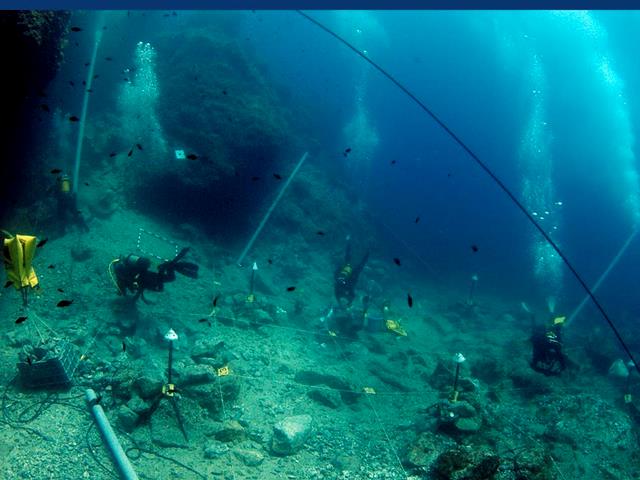
In the 1970s various exploratory excavations, led by Doctor Julio Mas and the old Patronato de Arqueologia Submarina de Cartagena, were made of the area, mapping the existence of several wrecks in the location, and removing 13 elephant tusks from the site, which bore inscriptions in the Phoenician alphabet, indicating that there was a Phoenician vessel amongst the wrecks.
Some of these tusks are now on display in the ARQUA museum in Cartagena, together with other artefacts recovered from the site, including an impressive stone anchor.
In 1988 the Centro Nacional de Investigaciones Arqueologicas Submarinas identified three distinct ancient wrecks in the same location, two Roman, and one Phoenician.
The current excavations began in 2007, and it is accepted that the site was damaged by divers seeking trophies, although it is impossible to assess what may have been removed prior to the start of the current investigations.
The site is located at the foot of an underwater cliff-face, near to the Isla Grosa, sloping down 24 metres to the seabed. Although completely submerged today, to a depth of 2 metres below the surface of the water, at the time the wrecks occurred, a quantity of rock would have been visible above the water, presenting a considerable hazard for shipping, hence the fact that several ships had run into the rocks throughout the course of history, including several modern wrecks.
In the same location, there are at least four boats; an 18th century vessel, and two Roman vessels from the 1st century AD and the 2nd Century BC, as well as the Phoenician vessel from the 7th century BC, with one of the Roman boats virtually on top of the site of the Phoenician vessel.
Methodology of the excavation.
During the last century, the military had blasted the rocks which were visible above the water line, thus deliberately 
In order to excavate the site, the rocks had to be removed, an operation carried out by the diving team using a system of inflatable bags, which help to lift the heavy rocks one at a time from the seabed and transfer them out of the way.
Although the site is called a wreck, there is no visible structure of a boat, the archaeologists are excavating a concentration of artefacts which would have either slid from the back of the boat or remained within her structure as she slid down the rock face and settled at the foot of the cliff. There may or there may not be a hull, buried beneath the silt, but the concentration of artefacts is within an area of 14 by 18 square meters.
Once the bulk of the rocks had been cleared from this area, it was mapped out as a grid, and divided into 2 by 2 metre squares, to enable the archaeologists to accurately record the finds and assess how the ship went down and the distribution of the cargo it was carrying.
Silt is being slowly removed from the site metre by metre, by means of a suction pipe system, powered from a generator on the support vessel above the archaeologists, with a detailed drawing and photographic record being made of the excavations as they slowly work down through the accumulated silts.
A 3d photographic map is being created of the excavation, by means of Photomodeler technology, and as the artefacts are removed they are photographed, labelled and transported to the ARQUA museum in Cartagena where they can be properly conserved and cleaned for analysis and display.
The artefacts.
This ship appeared to be mainly transporting raw materials which would have been used for the manufacture of trade 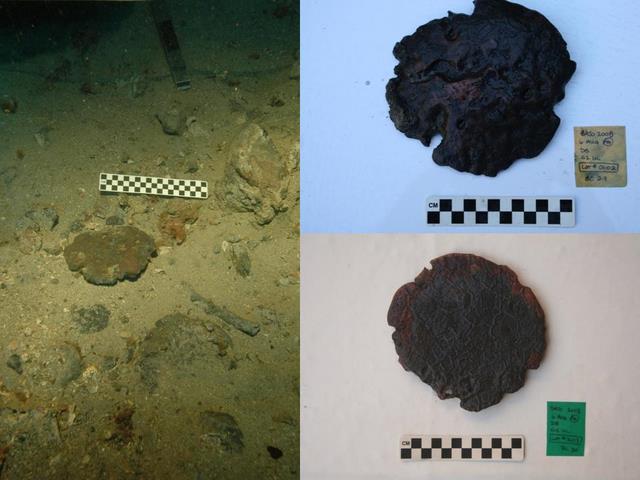
In the ancient world, several raw materials were of high economic value, hence the trouble and expense the Phoenicians went to in order to transport them on journeys which would often have taken months and involved many stops, along the Mediterranean trade routes.
Elephant tusks.
The tusks which have been recovered from this site come from a species of North African elephant which is now extinct, and would have been a smaller elephant than the Loxodonta Africana which currently inhabits the area from which these tusks would have come.
In previous seasons 15 tusks have been recovered, together with the 13 already found in the 1970s. This season, more are being uncovered, which makes this the most important ivory cargo dating from this period ever found, rendered even more important by the inscriptions on some of the tusks from the Phoenician alphabet, which greatly increases their historical value to archaeologists. Not all of the tusks are complete- there are pieces coming up which are barely recognizable to the untrained eye as being ivory, but which nonetheless, add to the importance of this cargo in a historical context.
Ingots of tin
More than 200 tin ingots, each weighing around a kilo each, have been removed from the site. Three different formats of ingots have been recorded, and these will be analysed to try and determine their origin.
Tin was an essential component of bronze production, and was mined in what are often referred to as not only the Iberian Peninsula, Spain, but also the Celtic nations, which at that time included the UK, specifically the lower regions of what is now Cornwall. Transported to the South of Spain, either via ship or across land, tin was forwarded on along into the Mediterranean basin for manufacturing. An overland route existed through Spain, which was known during Roman occupation as the Via de Plata, and was extended considerably during Roman occupation following an older trade route. The Phoenicians had a sizeable colony at Cadiz, where many materials arrived via land and were then shipped onwards along the coast.
Ingots of Copper.
Considerably smaller numbers of copper ingots, the second constituent of bronze, were also found on board
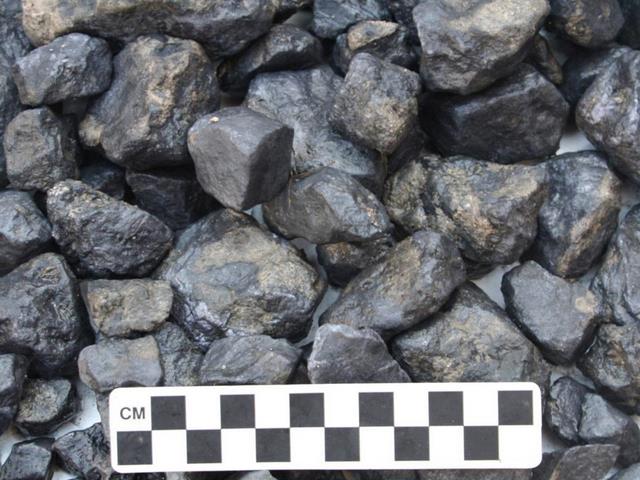
This is one of the most abundant and widely distributed sulphide minerals, and often contains silver, as well as other minerals.
There are innumerable pieces of galena on board the vessel, and this appears to represent the main bulk of the cargo, the extraction of silver via lead being a widely-documented activity of the Phoenicians
Ceramic Materials
A good quantity of ceramic material has been found on the site, representing a full cross section of items in use at the time.
An abundance of amphorae, used for transporting all types of liquids, from wine and water to fish sauce, as well as unguents and oils have been found, together with mortars, lamps, bowls and plates. Some of the amphorae even 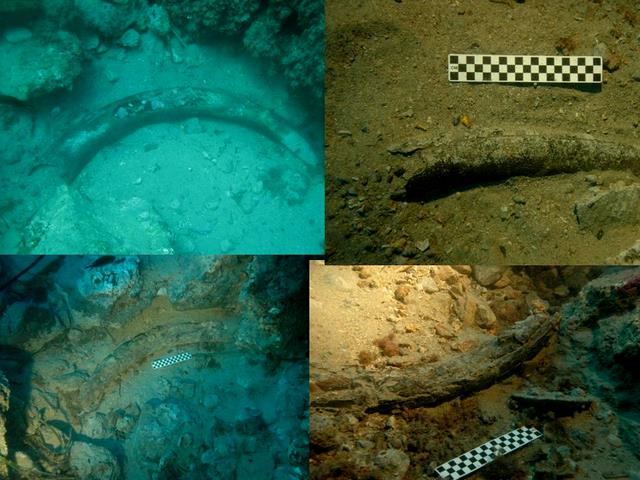
A wide variety of other objects have come to light, one of the most unique being a quantity of pine nuts, (see below) a gastronomic delicacy which still plays a valuable role in modern Mediterranean cuisine. To think that these pine nuts have lain intact on the sea bed for 2700 years is really quite incredible and render these a particularly important find for the team.
In addition to this, luxury goods have been found which would have been used in trading relationships with the local elite, such as a carved stone pedestal, an ivory knife handle, and wooden combs, together with a bronze piece which appears to have formed part of a bronze bed.
Everyday items, such as tiny little weights used in the bartering process have also come to light, but the greatest treasure of all may still lie buried beneath the silt, tantalizing fragments of wood indicating that some of the hull may still be in situ, extremely rare and important archaeological evidence which could lead to a greater understanding of boatbuilding techniques and this fascinating civilization.
The team
The current excavation project began in 2007, as a joint project between the National Institute of Archaeology of the ( 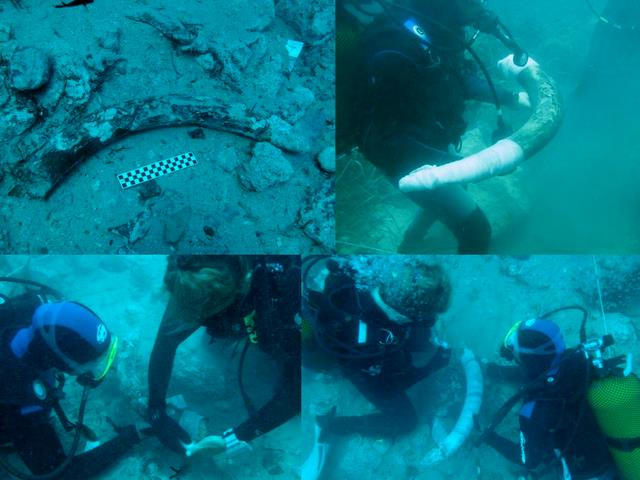
Volunteer teams from across the world are undertaking the excavation and analysis, from countries as diverse as Spain, USA, Greece, Holland, Australia, Italy, France and Turkey.
The main financing for the project is provided by the National Geographic, with the ARQUA, the Museo Nacional de arqueologia in Cartagena collaborating in all aspects of processing the materials discovered in the various campaigns.
The team are supported in their work by a large group of dedicated volunteers, from both the local community and business, and would particularly like thanks to be given to the following:
Ayuntamiento de San Javier
Consorcio La Manga
National Geographic
INA, Institute of Nautical Archaeology
Arqueomar
ARQUA
Capitania Maritima
Furnove
Associación de amigos de la arqueologia subacuatica de Cadiz
Planeta Azul
Celestino maquinaria de Alquiler
Cademar
Puerto Tomas Maestre
Anyone wishing to trace more information about the Phoenicians in the Region of Murcia may be interested in visiting the ARQUA museum in Cartagena, which contains not only several of the pieces excavated from this site in its permanent display, but also has the remains of Mazarron 1 and a reproduction of Mazarron 2, both of which were excavated from the nearby town of Mazarron. Both were believed to be Hippos, small, light vessels which worked close to shore and carried cargo out to larger ships or worked along the coastlines of the Mediterranean.
Mazarrón 2 is the most intact Phoenician vessel of its kind and still lies on the seabed in Mazarrón, whilst decisions are made about its future.
Click to read the full history of the San Javier municipality
Click for more information about the San Javier municipality in SAN JAVIER TODAY
article_detail
Cartagena
El Carmoli
Islas Menores and Mar de Cristal
La Manga Club
La Manga del Mar Menor
La Puebla
La Torre Golf Resort
La Union
Los Alcazares
Los Belones
Los Nietos
Los Urrutias
Mar Menor Golf Resort
Pilar de la Horadada
Playa Honda / Playa Paraiso
Portman
Roldan and Lo Ferro
San Javier
San Pedro del Pinatar
Santa Rosalia Lake and Life resort
Terrazas de la Torre Golf Resort
Torre Pacheco
Aledo
Alhama de Murcia
Bolnuevo
Camposol
Condado de Alhama
Fuente Alamo
Hacienda del Alamo Golf Resort
Lorca
Mazarron
Puerto de Mazarron
Puerto Lumbreras
Sierra Espuna
Totana
Abaran
Alcantarilla
Archena
Blanca
Corvera
El Valle Golf Resort
Hacienda Riquelme Golf Resort
Lorqui
Molina de Segura
Mosa Trajectum
Murcia City
Peraleja Golf Resort
Ricote
Sucina
Condado de Alhama
El Valle Golf Resort
Hacienda del Alamo Golf Resort
Hacienda Riquelme Golf Resort
Islas Menores and Mar de Cristal
La Manga Club
La Torre Golf Resort
Mar Menor Golf Resort
Mazarron Country Club
Mosa Trajectum
Peraleja Golf Resort
Santa Rosalia Lake and Life resort
Terrazas de la Torre Golf Resort
La Zenia
Lomas de Cabo Roig

CAMPOSOL TODAY Whats OnCartagena SpainCoronavirusCorvera Airport MurciaMurcia Gota Fria 2019Murcia property news generic threadWeekly Bulletin



